As an amateur scholar and die-hard enthusiast of everything to do with Alice in Wonderland, I have launched a podcast that takes on Alice’s everlasting influence on pop culture. As an author who draws on Lewis Carroll’s iconic masterpiece for my Looking Glass Wars universe, I’m well acquainted with the process of dipping into Wonderland for inspiration.
The journey has brought me into contact with a fantastic community of artists and creators from all walks of life—and this podcast will be the platform where we come together to answer the fascinating question: “What is it about Alice?”
For this episode, it was my great pleasure to have Ken Markman, managing partner and CEO of KKM Global Brand Strategies, join me as my guest! Read on to explore our conversation, and check out the whole series on your favorite podcasting platform to listen to the full interview.
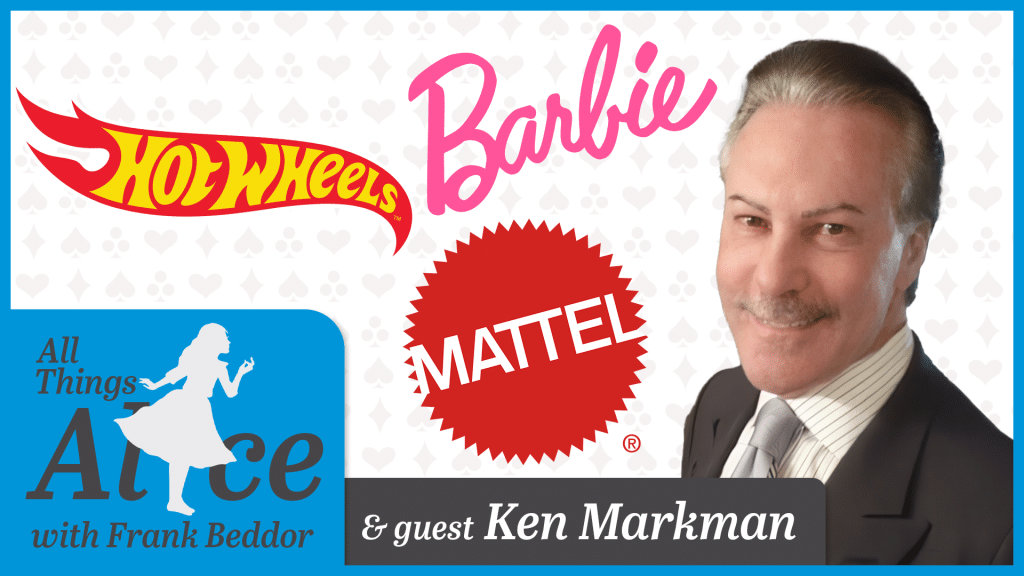
Frank Beddor
Ken Markman, welcome to the All Things Alice podcast. I’m really appreciative and excited to have you on the show and to talk about your contribution to the vision that became The Looking Glass Wars franchise and brand. You’re the Manager Partner and CEO of KKM Global Brand Strategies and you've worked on some big movies. You worked on Empire Strikes Back and Scarface. You told me a couple of stories about Barbie when you worked at Mattel. You have all sorts of wonderful stories and you used these stories to help me see a vision for The Looking Glass Wars. But I cannot remember how we met or who introduced us.
Ken Markman
I think I may be able to put a breadcrumb on the water for you. You were thinking that you needed to begin to put a corral around this omnibus piece that was sprawling outward and you wanted to be in the licensing business, as a lot of producers and IP owners did at the time. Around that period of time, I had been in very serious conversations with what was then the senior management of WMA. As a result of Edward Scissorhands and several filmmakers at the time who were turning pop culture storytelling into merchandise, the water cooler conversation became “Who's got your toy line? When is your t-shirt coming out?” It was no longer, “What Ferrari do you have?” Nobody cared about that. They wanted to know who had your toy line.
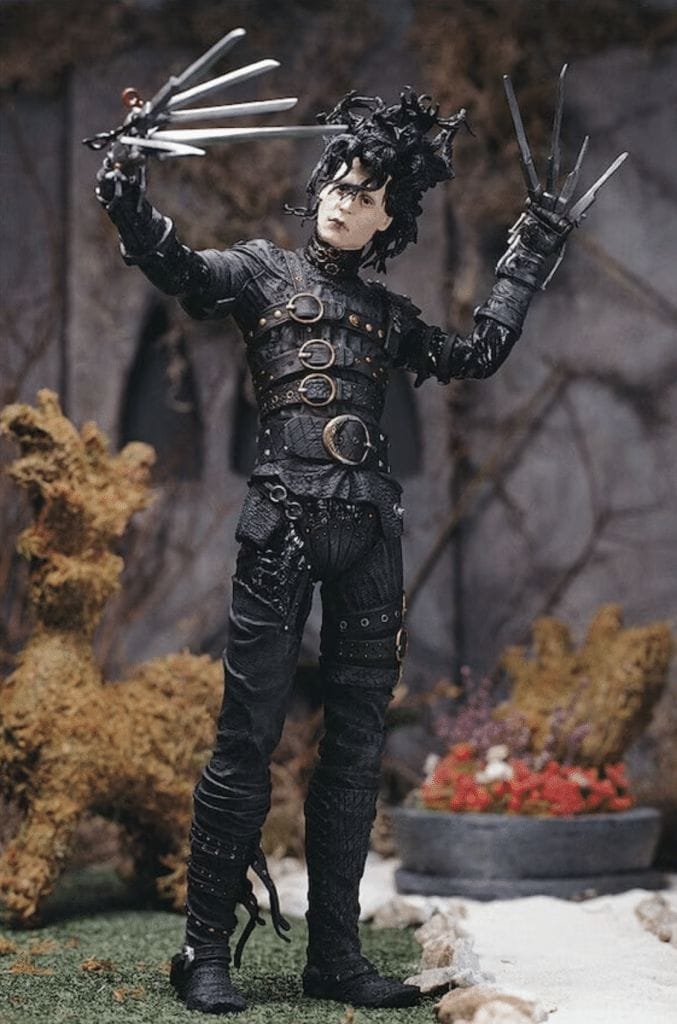
As a result of that, you reached out to a colleague of mine at what was then called LIMA, the Licensing Industries Merchandiser’s Association. You had spoken to a gentleman, I believe his name was Marty Brochstein and you were describing how you needed an entertainment guy, a merchandising guy, a marketing guy, all of that. Marty was very, very kind to have volunteered my name. I was thrilled that he did and I was even more thrilled that you picked up the phone and called. I remember sitting in your tobacco leather chairs in your office.
FB
I love those chairs.
KM
I love those chairs too and I have been wanting to get a set. My brother-in-law has a beautiful pair but he won't release them to me. But we sat there and I was completely mesmerized by the visual stimulus. That's a word that came out of Mattel. The visual stimulus is very often what we as the acquiring company would have to look at and how potentially toy-etic it could be, something you can play with. When I was over at Universal looking at Casper the Ghost, I turned to Mark Taylor, who was the Head of Development at Boy’s Toys at Mattel, and I said, “We got to pick this up. This is great. It's omnipresent. It's in culture. Every kid has a ghost story.” He goes, “Ken, how do you play ‘Ghost’?” I couldn't answer the question.
That was a telling tale of learning for me while at Mattel. Then when you and I talked, we saw all your card soldiers and Alice in Wonderland and the Mad Hatter and the magic mushrooms. It was a cornucopia of visual stimuli. You had spent an inordinate amount of time with the extraordinary artist Doug Chiang. I immediately fell into this immersive embrace of Alice in Wonderland, and in so doing, I think what percolated immediately into our conversation was not, “How do we play Alice?” but, “How could you claim this as your own?” Or was this just going to be another derivative story in a long merchandising tale? It became incumbent upon me to want to reinvent your story so that you, Frank Beddor, the author, could take control of what had been a classic story owned by somebody else and perhaps even other filmmakers.
That story then became the backstory or the real story, that was so compelling. I know when you told it at meetings at William Morris and CAA and others, invariably, somebody would lean over to me and say, “Ken, is that true?” I always responded, “If Frank said so, it has to be true.” So you became the legend, the mouthpiece, and the face of a new brand of a classic tale that had been mythologized and storied through folklore, which are the underpinnings of Joseph Campbell and the arc of the hero, and everything else from which you've learned and have excelled at.
FB
I tried to answer all of the questions you had posed. It's funny for me to think back to 2002 when I met you because my book wasn't published until 2004 in the U.K. and 2006 in the U.S.
KM
Thanks to Barbara Marshall.
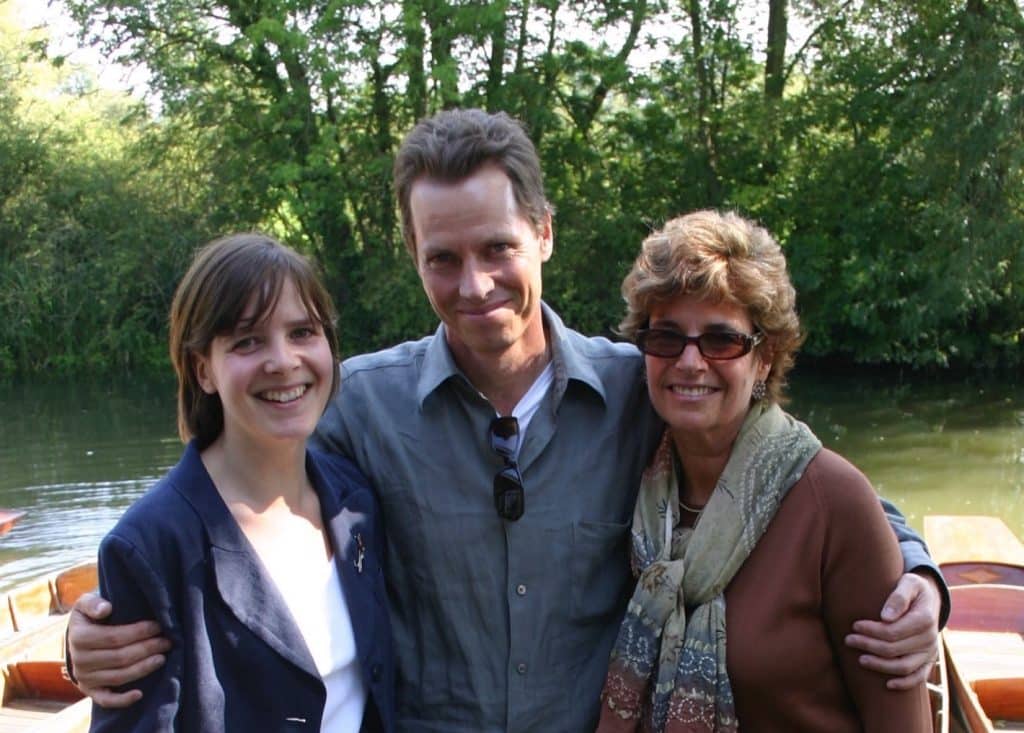
FB
Who you introduced me to.
KM
I knew her because I had been working on The Future is Wild with a documentarian from the U.K.
FB
She wasn't a traditional agent. She was a book packager so she she knew all of the publishers. We went in and met all the different publishers and we took the approach that you do in the movie business. You go to the highest possible person and then trickle down. Turns out that in publishing, editors don't like that. Editors want to find the writers and then bring the writers to the publisher, so there was a bias against my book. It wasn't until I went to Egmont, where the publisher had just been given that job and she was previously the lead editor. She said, “You're going to be the last book I edit before I become the publisher.” The combination made it okay for her. Everybody else passed until I worked with Cally Poplak at Egmont and the book became successful.
But I want to go back to the point of our meeting in my office in Hollywood. One of the things I learned from working as a producer was the power of visuals, the visualization of the world. But I couldn't figure out in my mind how the card soldiers could unfold and march and be compact. I just didn't see it. So I asked Doug Chang, who had worked on Star Wars, to do that sketch. (Doug’s Card Soldiers Sketch) That was the first sketch I put on the wall. I loved it so much that I asked him about who he worked with on his movies that did environments. Then I hired Brian Flora, who did the Valley of Mushrooms and the Chessboard Desert. It became a little bit of an obsession for me to visualize the world while I was writing it, as a kind of collaborative effort between artist and author. Then you came into the office, one of the first people who came in who had a business perspective. It was sort of audacious to think, “I need some kind of branding or I want to build a franchise.” I knew I wanted to do that but I didn't have anything ready yet. Your reaction to the world and to what was already created was really inspiring. I thought, “Okay, I might have something here.”
Then you wrote your proposal, which started off with the perspective of branding mythology and pop culture. Then you wrote, “Cultural myth, storytelling, and reoccurring themes bond culture.” I was like, “Okay, what is he talking about?”

KM
My wife is still asking me that same question.
FB
Then you said, “The multi-generational social condition is called the Cultural Evolution Theory.” I would like you to explain to our listeners what your job is when it comes to branding stories in culture and trying to catch the zeitgeist and make it your own because basically, that's what you were telling me to do. Give me some examples.
KM
You’re quoting some phraseology, which are the cornerstones of a book I have long tried to write, which I've shared in bits and pieces with you over these many, many, many years. It's called BrandCulture, and it comes from the multiple disciplines of my career, which are marketing, media, communication, corporate identity, design, and licensing. I just happen to be on the cusp of this epoch of culture right now, which we are living in thanks to the movie industry and other media that preceded it, where we're kind of losing words. Once they were the poetic juice of a culture and right now we're living in an experiential culture which is experienced visually. It's no wonder that social media has captured the next generation.
I was often asked by my students at UCLA, “How'd you get into the business?” And I said, “I love design. I love the expression of storytelling. If I could be in a business painting on the largest canvas in the world, putting words and pictures together, and make a living doing it, I would be very grateful, and that's what I did.” So as an English major on one side and a graphic design wannabe on the other, it was natural that logos, iconography, type, faces, messaging, hidden or overt, would become part of what I wanted to express in a brand.
Then along comes a gentleman from Sarah Lawrence College named Joseph Campbell. Many people who may be listening to this have read his books, such as The Hero with a Thousand Faces. If they haven't, they ought to pick it up or Google it and drill through some of his things. There's a wonderful book, The Power of Myth, authored by Bill Moyers of PBS, where he interviews Joseph Campbell and he gets right into the arc of the storytelling and arc of the hero.
These stories that are hardwired into our culture are expressed and handed down, interestingly enough, as memes. Not the memes we think of in the 21st century today, but memes that are passed on from one person to the next, as they were religiously. The Catholic Church was the biggest organization of theater 1,500-2,000 years ago. The equivalent of that theater today is no longer the Orpheum in Manhattan, nor is it Radio City, where it once was maybe in the 1930s, 40s, and 50s. Now it's the fandom that happens at a football stadium, where the collective catharsis of that experience is handed down. “Do you remember last year? It was fourth and three…” They remember it religiously and it gets passed down and it goes from father to son to grandson, all the way through.

We rode that wave through Hot Wheels, interestingly enough. I was at Mattel during the twenty-fifth anniversary and it was just at that time when dads were beginning to have sons. Just like my son-in-law had two sons and my two young grandsons, who are five and three, have now inherited my set of fifty Hot Wheels that I collected. What I'm saying is that memes are stories. Some of them are wildly exaggerated, and some of them are very explicit. Folklore becomes a mythology that gets passed on for hundreds and hundreds of years. Then if it's connected to iconography, whether it's a signature or a voice, a dance, a sound, or a musicianship that then gets placed against twenty-four frames a second, and turns into a motion picture or a theatrical play, this is what we're dealing with today
The experience economy is the expression of story. One of the things we learned through the study of human psychology is that people don't remember facts. If I gibberish to your audience today and say, “Well, you know, seventy-three percent of albinos never reach the age of fifty, it’s going to go right over their head.” If I said to them, “Have you ever seen an albino cat land on their feet after falling off a thirty-foot-high roof?” They'll remember the story. They're not going to remember the fact. So the very beginning of mythology and meme storytelling, which becomes legend and then expressed and changed over time and modernized through technology and media, is the art of storytelling. That's where you began with one of the great stories of all time, Alice in Wonderland.
One of the things I want to amplify about branding is that you begin with the story, and we wanted you to own your story. We wanted to carve it out as unique and separate. This happens whether it's BMW or Nike or Coca-Cola. If you and I were in Atlanta sipping a Coca-Cola in their corporate headquarters, and I said, “Wow, that was a great meeting with the management at Coca-Cola, wasn't it Frank? They got it right away.” If we went back and did a post-mortem and we asked Coca-Cola, they'd say, “Well, was it the meeting that was so good? Was it Frank's presentation? Or was it the Coke that we shared because we enjoy Coke and Coke is life?” That's how ingrained it has become over the last 120 years.
Advertising helps that to a great degree with BMW. “BMW, the ultimate driving machine.” It doesn't get any better than that. There's another axiom that falls into branding, and we talked about this early on, in order to own a brand, you want to be able to own a slice of the consumer's mind. You want to own a word. You want to own a phrase. You want to own a color in their mind. Red, indelibly, boom, Coca-Cola. Nike with the swish. It's simple. It's straightforward. It gets right to you. So when you think about BMW, “the ultimate driving machine,” it couldn't be any better than that. The axiom here is, you want to take the ordinary and make it extraordinary. That's what BMW did. It's an automobile. Starbucks, it's coffee, man. But the reality is, they've taken the ordinary and turned it into the extraordinary, and that's what branding is all about. You can take that experience and own it.

FB
You tasked me with that when you simply said I should come up with a different spelling for the name Alyss, so I can own Alice. That was the moment I started thinking about broadening out from the names that Lewis Carroll had created and Disney had made familiar. So I changed the spelling of Alyss and the Mad Hatter became Hatter Madigan. Another thing you did that was also very, very helpful is you were posing this question of, “How do we suspend disbelief in this world, in this reality of a fantasy world?” Because The Looking Glass Wars is set both in Wonderland and Victorian England, that gave me a little bit of balance. I also was mindful of creating a Wonderland where people could suspend their disbelief. That was something you kept saying, “We need to be able to suspend disbelief so we can land and live.” As if Jurassic Park is actually in Hawaii, or Wonderland is just up the Five. If you drive long enough, you'll find yourself in Wonderland,
KM
Exactly. How could you refute the simplicity of the idea that in a grain of amber, there was a mosquito that contained the DNA of a dinosaur? Only Michael Crichton, with his scientific background, could create it. He created the myth and he turned it into a story that became irrefutable. It's so believable that how could you not want to believe it? That's where metaphors and storytelling become this immersive fabric in the consumer's mind. That's how we started our story. There’s enough believability in the past to shape-shift, to use one of your words, shape-shift some of this so that you can take ownership of it and it becomes irrefutable.
FB
You wrote, “A new reality for a new generation, borrowing from the past and making them their own, a form of branded history with its own images indelibly marked in the minds of a new global audience.” So I tried to convey that in a less Professor-ish way
KM
I can't get away from myself.
FB
That whole idea of creating a new reality, telling a story in a different way but taking ownership of it, I found when I started to go out into the marketplace with The Looking Glass Wars, that was happening. People felt grounded in the world and the story because, the premise of Lewis Carroll getting it wrong was easy enough to go, “Let me just turn my perspective on history and what I think I know.” The other thing that was really important was, that you said, “You have to change their perception of what they think Wonderland is right off the bat. You have to have the meta-story, the story behind the story.” So suddenly I had more work to do.
KM
I remember that. It's really true. There are a couple of axioms that have always found their way into my thought process when working on a movie or any branding objective. You do want to suspend disbelief, which is what entertainment and storytelling do. You want to find the universal truth in a message that is not so far out of reach that you can not believe it, it's just beyond my grasp of reality as I know it. By penetrating your world, you're going to show me how I can conclude that reach.
To get back to Coca-Cola for a moment, If you ask Coca-Cola, they want to be, the refreshing drink at the end of your reach. They want their product, their brand, to be at the end of your reach, no matter whether you're at home, the movie theater, or a baseball stadium. A great storyteller and filmmaker does just that. You suspend disbelief. You can almost break through the fourth wall, but by sliding into that world, you will take me magically to a place heretofore I've never been permitted to go. So you become my guide, my sherpa, and through your storytelling, you're telling me how to survive, how to succeed.
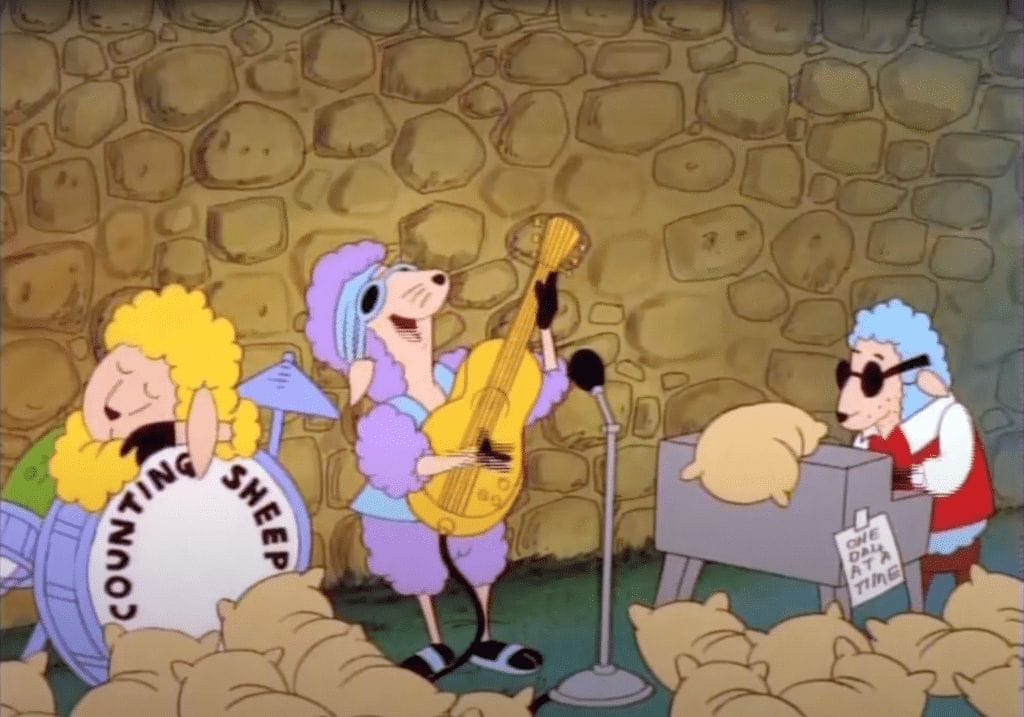
That leads me to the universality of it. I was making a presentation to a number of licensees in Los Angeles and California. I was working on a show when I was at MTM called The Blanket Show. There was this Rastafarian sheep who would sit down and unfold a blanket that looked like a book and he would invite all the animals in the woods to sit around while he told a story. It was basically a practice and a runway for parents to help their little ones get off to sleep. At that time in the industry, you had to have 22 or 28 half-hours to be able to syndicate something so that the repetitive nature of viewership would incline a purchase decision for merchandise. I decided I couldn't do that because Bill Melendez, who famously did the Peanuts animated specials, was our animator. We couldn't afford to do 22 or 28 half-hours with Bill, so we decided to do one, but the one was going to be the reprise and the kickoff every night for The Blanket Show at home. So we started off with the Rastafarian sheep. We're jamming and the kids would be dancing the putting their jammies on. “What are we doing now, boys?” “We're going to go brush our teeth and comb our hair. Then we're going to put the music on and then Mom's going to come in and read the book and then Dad's going to shut off the light.” So my pitch to the licensees was, “Here's the universal truth, would you like to be in a business that happens in every household in the world, every night? That's a big business. Or you could take a risk and hope that Batman 47 is going to be as successful as the first two or three?” No, I'd like to be in the bedtime business.
So the book was born and the night-lights and music were created. We had everyone from Rosemary Clooney up and down the ladder singing nighttime songs and the universal truth was irrefutable. You don't want to be in a business that happens in every household around the world at least once a day? We had 35 licensees signed by the end of our first six months based on one half-hour. It was unheard of in the business, an absolute breakthrough.
The first question I invariably asked you was, “Why do you want to tell this story?” Whether you're talking to Alan J. Pakula or Steven Spielberg, both of whom I had the highest regard for when I worked with them, “What's the story you want to tell?” Then I get into that conversation with them, and I say, “What's the promise and what's the takeaway?” It becomes really simple. The promise may be a little abstract. If you ask Christopher Nolan what his promise was on his many movies, it would probably be a very esoteric and dense response, but nonetheless very curated. I then say, “What's the takeaway?”
I put it down to this, your audience just saw your movie in a theater. As they're leaving the theater, the lights and the smell of popcorn are going to hit them in the head. What is the thing they're going to say to their significant other or the person they just shared that experience with? What is that football fan going to tell his son? What's that boy going to tell his dad he just saw in the Viking game? What's the fandom response? That's the takeaway. That's your job as a filmmaker. What do I want them to say, and how does that correlate with the promise I'm going to give to them, so they can enter the sphere of my chapel, my theater of communication, and over the next hour and a half I can take them on the ride of their life? Whether it's at a theme park, in a church, in a synagogue, in a baseball stadium. Your job becomes, what's the takeaway?

FB
I remember you posing that question and it was very challenging to reduce it to something personal. That was another aspect of our working together, I started thinking about the power of imagination and the power of getting back to your inner child, where you have wonder and curiosity and anything is possible. I thought, “I'm writing this book because of that. Then you asked, “How do you play imagination?” Then it became about good and evil and Joseph Campbell stuff and you're pivoting to, “What kind of mythology am I creating? What myth do I want people to walk away with that's different than good and evil?”
Now in this culture, as I think about what I'm working on, I think about what's real. Is this real or is it not real? That's powerful with Alyss, because people tell her that her backstory is not real, and she loses her belief in her history. The world is so divisive right now. Facts are no longer facts. With respect to Alyss, I thought it was a really powerful idea that people want to understand that this is real and they can hold on to this. It's not going to be pulled away.
KM
That reinforces the etymology of “looking through the looking glass.” At what end of that am I seeing reality? Is it closer to me or further away? Is it giving me the right optics? There's subliminal messaging in that statement that you could run and almost code the brain to be able to say, “I'm looking through this lens. Which media am I experiencing today? What's truth, what's not truth?” If I'm sitting in a football stadium, I'm sitting with 100,000 people who believe in the same thing I do - the “Fandom of the Exalted Play.” We're going to be warriors and win this year's season. This cathartic experience economy is not new. It has lived for over 3,000 years. It's tribal. It's part of our DNA. We're hardwired to it. It's just that it has evolved as technology has evolved and as we have evolved ourselves as we need stories to survive.
FB
When you were asking me, “How do you play imagination?” you went to Barbie and the playability of Barbie and how Barbie evolved. You were talking about the different ways you could manipulate the clothing and then the kinds of Barbies. I remember that it was about the playability and how successful Barbie had been and then it tapered off and they had to reimagine it. Now, with the movie having come out, it must have come full circle.
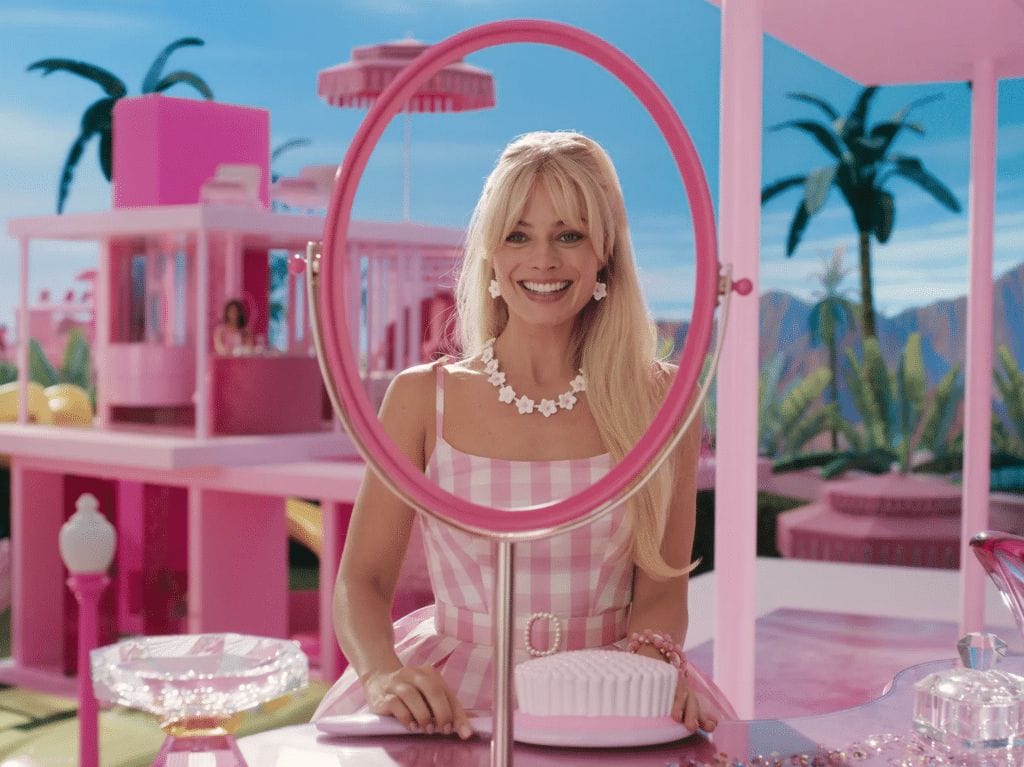
KM
Barbie is a portal. She's like a magic wand. They can cut her hair. They can dress her, and once they take off her clothes, they’re impossible to get back on so you have the use-up rate, as we used to call it, in the cosmetics business. Barbie has a usability rate and it wasn’t about how long a girl plays with Barbie. It used to be from the ages of two to eleven, but that has diminished greatly. Eleven-year-old girls are gamers now. They don't play with dolls anymore. The compression of age and the acceleration of adulthood for young kids has grown exponentially. But what has also grown is the number of Barbies. There’s a Barbie astronaut, Barbie policeman, Barbie fireman, Barbie whatever. She's the portal for play. She has costumes, just like the characters in any one of your stories. That all enhances it. Then you have Barbie's house, Barbie's car, and Barbie's friends.
I wanted to give an homage to Hot Wheels for a bit, knowing that you have little babes in your family now. Have you ever noticed a Hot Wheels car just about perfectly fits the width of a little boy's hand?
FB
I did not.
KM
Do you know that General Motors and all the car manufacturers give Mattel a royalty-free agreement? If you want to do Jeep, if you want to do Corvette, royalty-free. Why? Because that's the next generation. “I'm playing with the Ferrari, Dad! Look at me! Look at me!” When your big sister or big brother is telling you what you can play with and what you can't play with, and your mom and dad are telling you what to do. I have no control over anything but I do have control over these big machines that make loud noises. I can control this. It’s the sense of empowerment and wonderment of imagination. That's how toys work.
FB
I wanted to go back to the Jurassic Park story because Michael Crichton came up with that amazing universal premise and then with Steven Spielberg, they took ownership of dinosaurs to the point that nobody is ever going to take dinosaurs back. Do you agree with that?
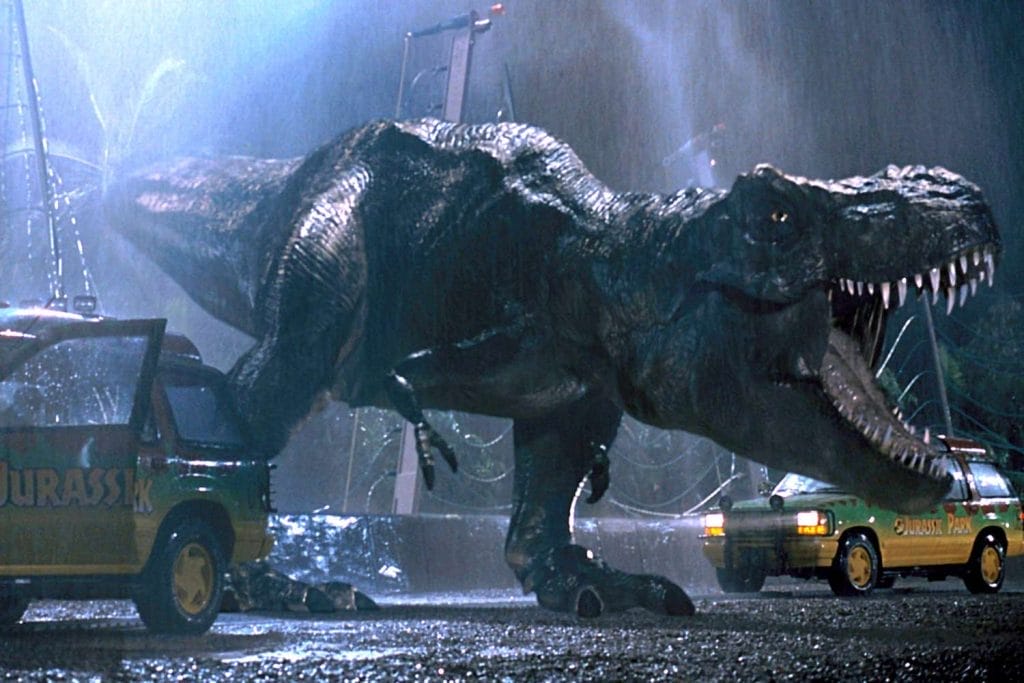
KM
One hundred percent they own dinosaurs. When I was at Mattel, we were looking at this secret property from Steven. We wanted to encourage Steven to do some color configuration so the dinosaurs could be branded. What that means is, that when Mattel did Mermaid Barbie other companies would go out and do a slightly smaller version of a mermaid and dump it into the Targets of the world and whatever. Meanwhile, we would be selling Barbie for $12 or whatever and they were selling theirs in a bin near the checkout line for four bucks. We were being cannibalized.
So mermaids, dinosaurs, puppies, all generic. But you can own it. And Steven looked like he was by the popularity and the size and the sound of his dinosaurs and the maturation of his technology, which he fused into his filmmaking brilliantly. We wanted a color distinction. I remember being in the meeting, going around with all the engineers, must have been in a boardroom of 25 people, and they convinced me we would not be able to go beyond a generic dinosaur and therefore we were afraid we would be cannibalized and our investment in the toy line would never pay off. Hasbro, smartly so, picked it up and made gazillions of dollars. That all down to the power of Steven Spielberg, the storytelling, the sound, the sensation. The rapture of that story was incredible.
But to your point, you want to own a character. You want to own everything about that and close it off so nobody can cannibalize you up and down the toy line by size, material, or channel of distribution.
FB
As this podcast is called All Things Alice, what do you think the reasons are that Alice in Wonderland has lasted for so long in culture but hasn't been centralized in the way that Jurassic Park centralized dinosaurs?
KM
You can't deny the story is ever present in culture. It's a little like Madeline. She kind of weaves in and out of culture. I think you have made it more accessible across media, which is what's necessary, as opposed to being a classic novel from an English writer steeped in a bygone era. But Alice has captured the imagination of adults and young children. If we can remember going back and saying, “What's real? Is it under my bed? Is it in my closet?” So I think Alice has the potential of wonder, fulfillment, of tripping the light fantastic. Of what is real and what is not? What is make-believe or not? Where does our imagination begin or end? It’s very tribal, watching the flicker of a fire in a cave and acting out the hunt of the day. These are truth serums that flow through our bloodstream. I think that is what has made Alice in Wonderland last for so long. It is a classic tale.

FB
What was your first introduction to Alice's Adventures in Wonderland? Did you read the book? Did you see the movie?
KM
It was reading the book, not watching the movie. I had, and have always had, a literary bent, whether it was Charles Dickens or Edgar Allan Poe. I was drawn to that period of dark things and things. I was always drawn to that sort of Nether World. With Alice, I identified with this unknown of possibilities.
FB
What's under the bed?
KM
What's under the bed? There were several toy lines I reviewed that were everything from dust bunnies to “What's under the bed?” You know, this mythology of “Who's in the shadows?” It plays to our deepest fears and grandest imaginations. We're hardwired to it.
FB
This is a part of entertainment and culture that people don't really understand and you've done a really beautiful job of articulating it and the two aspects of your interest in life, literature and art. I can only encourage you, for all of us listening and out in the world, to finish that damn book of yours. Where are you on this book?
KM
I have been talking about it relentlessly and just when I don't think I have anything to say about something that supercharges my jets, a conversation with somebody such as you ignites that fuse. I know there's something. I know storytelling and myth are part of our culture and have made what we have come to know as modern life for the last 3,000 to 5,000 years. I'd like to comment on it, to develop a rationale as to why people react a certain way. I've seen it and I know it to be the truth. That's why Alice is a perennial. She's not going away. It's beautiful and you will own imagination however you wish, to define it by color, by shape, by sound, by musical note, soon to be. Through your literary prowess, you will be able to turn these cards over, like your tarot cards, for the public to be able to penetrate the World of Imagination, as you want people to see it, because they may not recognize it by themselves. You are our Sherpa. You are our wise man at the fire telling us the story of Alyss, and that's the takeaway.
FB
Well, we need your book. We need your book so all the storytellers can have their roadmap and we can leave the breadcrumbs behind for our audience. What was really enlightening about the conversation was the way you contextualized your experiences and contextualize how other artists have taken their ideas and brought them into pop culture, going all the way back to your story about being in a cave and telling the story of the day’s hunt. All of that is really a powerful road map for creators to own in their own stories. It doesn't have to be a franchise. It just needs to be you expressing your truth and that comes through the writing and the process. That's what you helped me to clarify. You asked strong questions, which helped me make strong choices.
KM
Tell me, Frank, if you can give us a pre-teaser. Fragrance is one of the most powerful branding tools in the quiver, because of where the brain senses smell. It's in the center of the brain. It’s very, very powerful. So is music, and you seem to be on the cusp of something rather extraordinary because you could own a sound, just like Mission Impossible. It doesn't have to be an entire orchestra. It could be three notes, whatever.
Are you hoping that your musical will be able to bring a new audience to your franchise and the storytelling of Imagination? I wish I could have front-row seats. I can't wait. I want to be humming the song. Sammy Cahn has one of my favorite quotes. He was once asked, “What is one of the happiest things as a songwriter?” He said, “When I'm walking down Fifth Avenue and somebody is whistling one of my tunes.” I share that with you because you're not too far away, my friend.
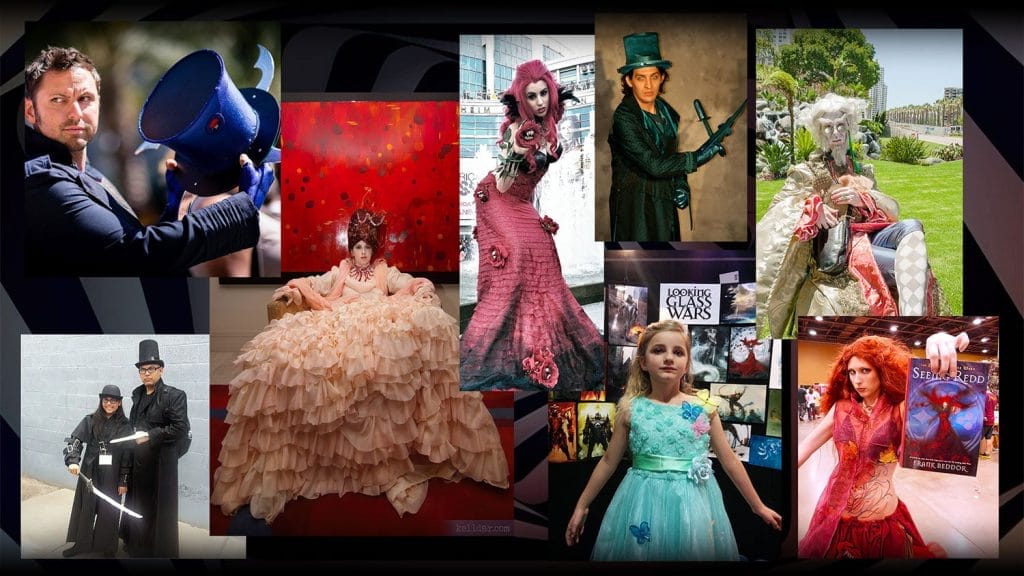
FB
That’s a great quote. My fantasy was that somebody would dress up as one of my characters for Halloween. When I was first writing my book, I didn't realize what a broad and beautiful world cosplay is and when I went to Comic-Con and people showed up in costumes based on my book, not a movie or a TV show, that was a highlight. But to answer your question, it’s timely because today I received a video from my composer, lyricist, and book writer, and they sang a little song to me, saying, “We're starting!” So, the process of The Looking Glass Wars musical has officially begun today.
KM
Bravo. Congratulations.
FB
Fingers crossed. I've been thinking about this for a long time because I was friends with Gregory Maguire and I went to see Wicked in San Francisco in 2003 and thought, “I wonder if I could do that with my book.” So I've been thinking about it for 25 years and here we are.
KM
I was working on Curious George with Universal for a couple of years and the next up on their hit list they wanted me to undertake was Wicked. Then there was a management change and NBC spun off so the rest is history, as is often the case in Hollywood. But I would have loved to have gotten my hands around that.
FB
My understanding is that Wicked was not even on their books. It was a miscellaneous item because originally it was developed as a movie. They couldn't make it as a movie and then they made it as this musical. Now, many, many years later, it’s one of the most successful musicals of all time and apparently, the movie is quite good from reports that I have heard. I'm excited to see it and maybe it'll rub off on folks thinking that The Looking Glass Wars and Alice in Wonderland could be the next.
KM
We don't have to own the genre. We just want to participate.
FB
Thank you so much for hanging out with us on the show today and sharing your wonderful stories and, most importantly, thank you for your contribution to my work that you initiated and so kindly imparted in 2002 and continued on through all these years. It has really helped me to create what I've created to date. So thank you, Ken.
KM
That warms my heart. That has the most meaning. H.L. Mencken, the journalist, was once asked, “Why do you write?” And he said, “I write first, to make a living, and secondly, and more importantly, to win the respect of those I respect.” So your comments are very dear and important to me. Thank you so much.
FB
Thank you so much, Ken. We'll talk soon.
KM
Thank you so much. Cheers.
For the latest updates & news about All Things Alice, please read our blog and subscribe to our podcast!